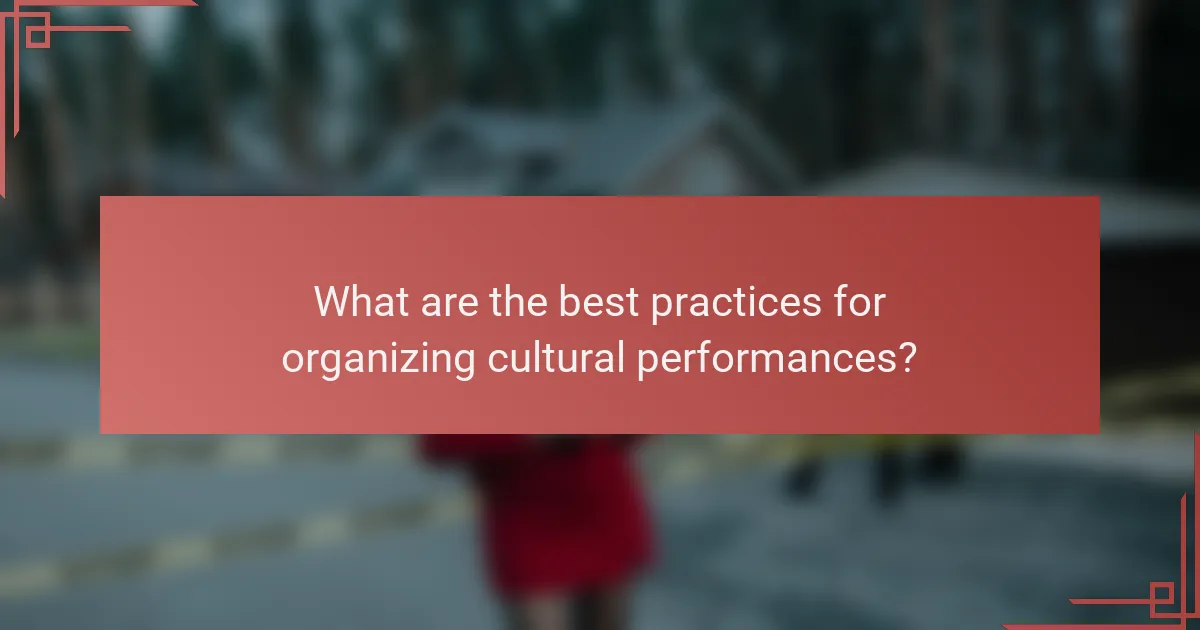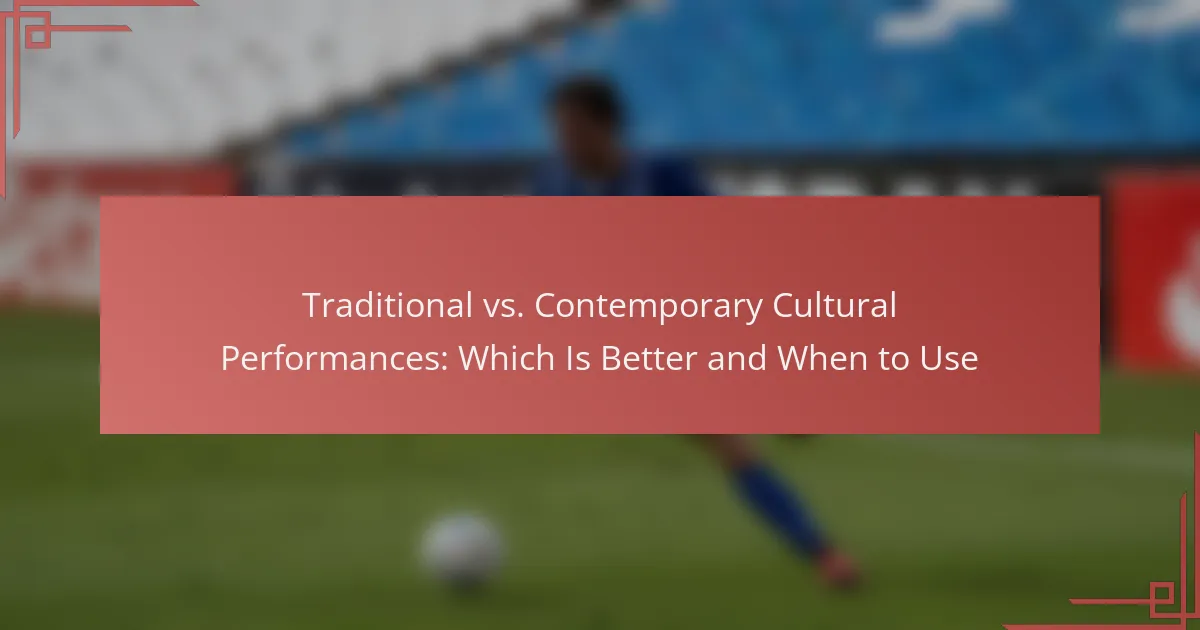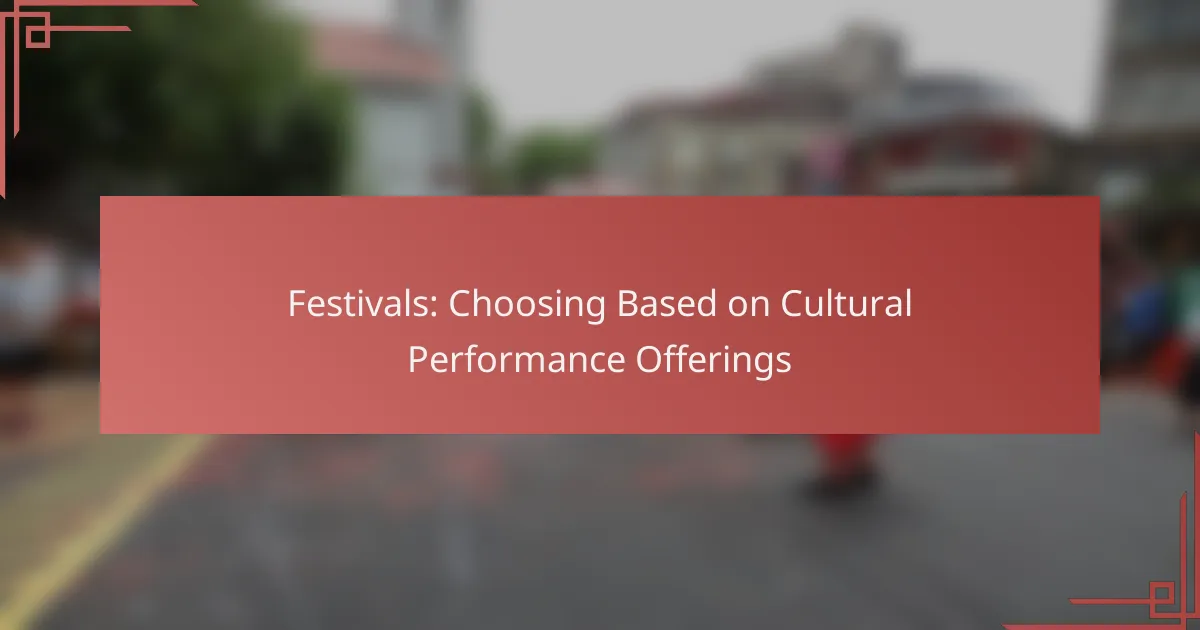Cultural performances play a vital role in enhancing visitor experience and engagement by offering immersive encounters that connect audiences with local traditions and artistic expressions. In major cities like New York, these events create memorable interactions that deepen appreciation for the diverse cultural landscape, transforming ordinary visits into extraordinary experiences.

How do cultural performances enhance visitor engagement in New York City?
Cultural performances in New York City significantly boost visitor engagement by offering immersive experiences that connect audiences with local traditions and artistic expressions. These performances create memorable interactions that encourage deeper appreciation of the city’s diverse cultural landscape.
Interactive theater experiences
Interactive theater experiences invite audiences to participate actively in the storytelling process, breaking the traditional barrier between performers and spectators. In New York City, productions like “Sleep No More” allow visitors to explore the venue and choose their own narrative paths, enhancing personal connection to the performance.
When attending interactive theater, consider the venue’s layout and the level of audience participation required. Some experiences may involve physical movement or decision-making, so be prepared for a dynamic environment. Tickets typically range from $50 to $150, depending on the show and seating options.
Community-driven festivals
Community-driven festivals in New York City celebrate local culture through performances, food, and art, fostering a sense of belonging among visitors and residents alike. Events like the West Indian American Day Carnival and the Lunar New Year Parade showcase vibrant traditions and invite participation from attendees.
To fully engage with these festivals, plan your visit around key events and performances. Many festivals are free to attend, but some may offer VIP experiences or merchandise for purchase. Check local listings for schedules and highlights to maximize your experience.

What types of cultural performances are popular in major cities?
Major cities often showcase a variety of cultural performances that enhance visitor experience and engagement. Popular types include live music events and dance showcases, each offering unique opportunities for interaction and enjoyment.
Live music events
Live music events are a staple in urban cultural scenes, ranging from intimate acoustic performances to large-scale concerts featuring popular artists. Cities like New York and London frequently host music festivals that attract both local and international talent, providing diverse genres such as jazz, rock, and electronic.
When attending live music events, consider the venue’s capacity and acoustics, as these factors can significantly impact your experience. Smaller venues often provide a more personal atmosphere, while larger arenas may offer a more energetic vibe. Checking ticket prices in advance can help you find options that fit your budget, typically ranging from affordable to premium pricing.
Dance showcases
Dance showcases highlight various styles, including ballet, contemporary, and traditional folk dances, reflecting the cultural diversity of major cities. Events may take place in theaters, public parks, or cultural festivals, allowing audiences to experience both professional performances and community-driven initiatives.
To fully enjoy dance showcases, pay attention to the choreography and the cultural context behind the performances. Many cities offer free or low-cost events, especially during cultural festivals, making it accessible for everyone. Be sure to check local listings for schedules and ticket availability, as popular shows can sell out quickly.

How can cultural performances improve visitor experience?
Cultural performances enhance visitor experience by providing immersive encounters that engage the senses and foster emotional connections. These performances can transform a standard visit into a memorable event, making cultural heritage more accessible and enjoyable.
Creating memorable experiences
Cultural performances create lasting memories by offering unique interactions that resonate with visitors. For instance, live music, dance, or theatrical presentations can evoke emotions and create a sense of belonging, making the experience more impactful.
To maximize the memorability of these experiences, venues should consider the timing and setting of performances. Outdoor festivals, for example, can leverage natural surroundings to enhance the ambiance, while indoor events may benefit from intimate settings that encourage audience participation.
Fostering cultural appreciation
Cultural performances play a vital role in fostering appreciation for diverse traditions and histories. By showcasing local art forms, visitors gain insights into the values and narratives that shape a community’s identity.
To effectively promote cultural appreciation, organizations should provide context for performances, such as background information on the art form or the artists involved. Engaging audiences through workshops or Q&A sessions can deepen understanding and encourage dialogue about the cultural significance of the performances.

What are the best practices for organizing cultural performances?
Effective organization of cultural performances enhances visitor experience and engagement by ensuring quality, accessibility, and community involvement. Key practices include collaborating with local artists and utilizing public spaces to create inviting environments for audiences.
Engaging local artists
Involving local artists in cultural performances fosters community pride and authenticity. This can be achieved by hosting auditions or open calls for performers, ensuring diverse representation across various art forms such as music, dance, and theater.
Consider establishing partnerships with local arts organizations or schools to identify talent. Offering fair compensation, such as a percentage of ticket sales or a flat fee, can also motivate participation and enhance performance quality.
Utilizing public spaces
Public spaces serve as ideal venues for cultural performances, making events accessible to a wider audience. Parks, plazas, and community centers can accommodate various performance types while providing a relaxed atmosphere for attendees.
When selecting a public space, consider factors such as capacity, acoustics, and amenities. Ensure compliance with local regulations regarding permits and noise levels. Additionally, promoting the event through local channels can maximize attendance and community engagement.

How do cultural performances impact local economies?
Cultural performances significantly enhance local economies by attracting visitors and generating revenue. These events create a vibrant atmosphere that encourages spending in various sectors, ultimately benefiting the community.
Boosting tourism revenue
Cultural performances serve as major attractions that draw tourists, leading to increased tourism revenue. Events such as music festivals, dance shows, and theater productions can elevate the profile of a location, enticing visitors who may spend on accommodations, dining, and local attractions.
For example, a well-promoted cultural festival can increase hotel occupancy rates by 20-30% during the event, significantly impacting local earnings. Communities that host regular performances often see a steady influx of tourists, contributing to long-term economic growth.
Supporting local businesses
Local businesses thrive when cultural performances are held, as they benefit from the influx of visitors. Restaurants, shops, and service providers often see a surge in customers during these events, leading to higher sales and potential job creation.
Moreover, partnerships between event organizers and local businesses can enhance the overall experience for visitors. For instance, offering discounts or special packages can encourage attendees to explore the area, further stimulating the local economy. Engaging local artisans and vendors at these events also promotes community pride and sustainability.

What are the challenges in promoting cultural performances?
Promoting cultural performances involves several challenges that can hinder their visibility and success. Key issues include securing funding and sponsorship, as well as ensuring audience accessibility to these events.
Funding and sponsorship issues
Securing adequate funding and sponsorship is a significant challenge for cultural performances. Many organizations rely on grants, donations, and corporate sponsorships, which can be unpredictable and competitive. Without sufficient financial backing, the quality and reach of performances may suffer.
To address funding issues, cultural organizations should diversify their income sources. This can include applying for government grants, partnering with local businesses, or launching crowdfunding campaigns. Establishing strong relationships with sponsors can also lead to long-term support.
Audience accessibility
Ensuring audience accessibility is crucial for the success of cultural performances. Barriers such as high ticket prices, inconvenient locations, and lack of transportation can deter potential attendees. Additionally, cultural performances must consider the needs of diverse audiences, including those with disabilities.
To improve accessibility, organizations should offer tiered pricing options, provide transportation assistance, and ensure venues are equipped for individuals with disabilities. Engaging with community groups can help identify specific needs and preferences, making performances more inclusive.

How can technology enhance cultural performances?
Technology can significantly enhance cultural performances by providing immersive experiences and interactive elements that engage audiences more deeply. Tools such as virtual reality, augmented reality, and mobile applications can transform traditional performances into dynamic, participatory events.
Virtual reality experiences
Virtual reality (VR) experiences allow audiences to immerse themselves in cultural performances in a way that traditional formats cannot. By using VR headsets, viewers can be transported to different settings, such as historical reenactments or live performances, making them feel as if they are part of the action.
When implementing VR, consider the technical requirements, such as high-quality graphics and sound, to ensure a captivating experience. Additionally, it’s essential to provide clear instructions for users, as some may be unfamiliar with VR technology.
Examples of successful VR applications in cultural performances include virtual museum tours and live-streamed concerts where viewers can choose their perspective. These experiences can increase engagement and broaden access, allowing people from various locations to participate without the need for travel.



